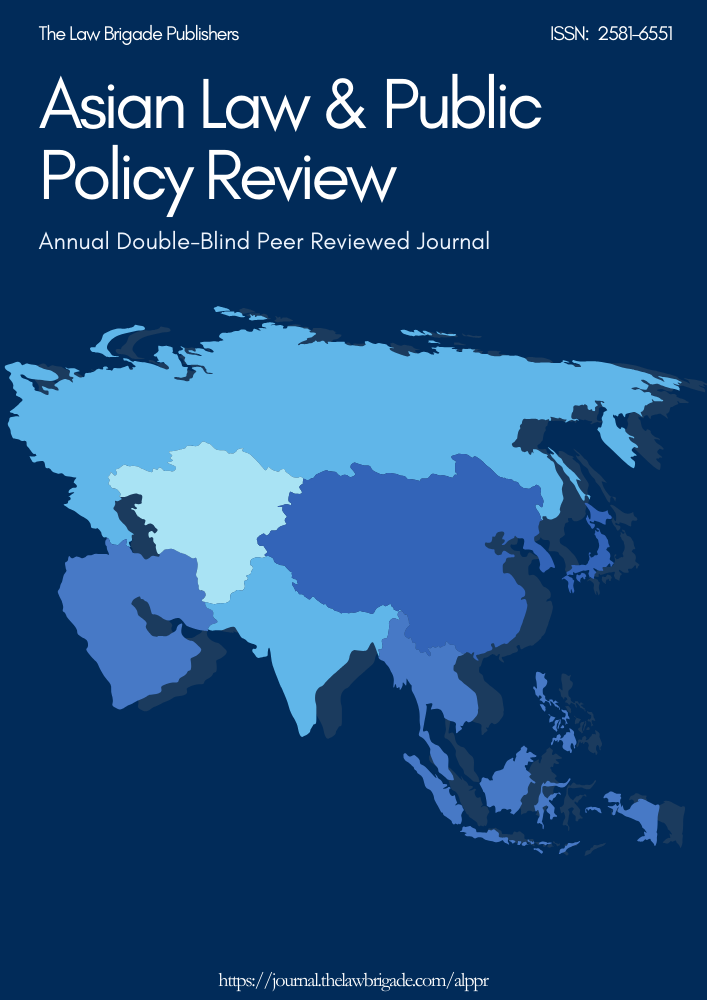IMPACT OF AUTOMATION ON WORKFORCE – AN ANALYSIS OF THE WORLD DEVELOPMENT REPORT 2019
Keywords:
Automation, Workforce, DevelopmentAbstract
Increasingly outperforming humans in all spheres that were earlier assumed to require human judgment and experience. The solace of few limitations on Artificial Intelligence is short lived, given the speed at which it is developing. The emergence of Artificial Intelligence is a giant step towards changing the face of human civilization altogether, either in form of unprecedented progress as advocated by Zuckerberg or wiping them off from the earth as affirmed by Stephen Hawking and Elon Musk. 1 The growth in the application of automation has been vigorously debated among economic planners, think tanks and public policy analysts alike. The World Development Report 2019 titled The Changing Nature of Work (Working Draft) discusses the impact of technology on work across various sectors on a positive note and the need to focus on building human capital to be in tandem with such changes. The overwhelming rate of technological advancement and the fears of disruptive consequences for labour across world are not unprecedented. History is evident of the fact that the deployment of new technologies leads to erosion of previous jobs but creation of new jobs which could not be predicted at the time.
Downloads
References
▪ Carl Benedikt Frey and Michael A. Osborne, The Future of Employment: How susceptible
are jobs to computerization? OXFORD MARTIN SCHOOL (September, 2013).
▪ Carl Benedikt Frey et al., Technology at Work v2.0: The future is not what it used to be,
CITIBANK (2016).
▪ David H. Autor et al., The skill content of recent technological change: An empirical
explanation, QUARTERLY JOURNAL OF ECONOMICS, (2003).
▪ David H. Autor, Why Are There Still So Many Jobs? The History and Future of Workplace
Automation, 29(3) JOURNAL OF ECONOMIC PERSPECTIVES (2015).
▪ Gerlind Wisskirchen et al., Artificial Intelligence and Robotics and Their Impact on the
Workplace, IBA GLOBAL EMPLOYMENT INSTITUTE (April 2017).
▪ James Manyika et al., A Future that Works: Automation, Employment, and Productivity,
MCKINSEY GLOBAL INSTITUTE (2017).
▪ James Manyika et al., Jobs lost, jobs gained: Workforce transitions in a time of
automation, MCKINSEY GLOBAL INSTITUTE (December 2017).
▪ Jonathan Woetzel et al., India’s labour market a new emphasis on gainful employment,
MCKINSEY GLOBAL INSTITUTE (June, 2017).
▪ M. Arntz et al., The Risk of Automation f
Downloads
Published
Issue
Section
License

This work is licensed under a Creative Commons Attribution-NonCommercial-ShareAlike 4.0 International License.
License Terms
Ownership and Licensing:
Authors of research papers submitted to any journal published by The Law Brigade Publishers retain the copyright of their work while granting the journal specific rights. Authors maintain ownership of the copyright and grant the journal the right of first publication. Simultaneously, authors agree to license their research papers under the Creative Commons Attribution-ShareAlike 4.0 International (CC BY-SA 4.0) License.
License Permissions:
Under the CC BY-SA 4.0 License, others are permitted to share and adapt the work, even for commercial purposes, provided that appropriate attribution is given to the authors, and acknowledgment is made of the initial publication by The Law Brigade Publishers. This license encourages the broad dissemination and reuse of research papers while ensuring that the original work is properly credited.
Additional Distribution Arrangements:
Authors are free to enter into separate, non-exclusive contractual arrangements for distributing the published version of the work (e.g., posting it to institutional repositories or publishing it in books), provided that the original publication by The Law Brigade Publishers is acknowledged.
Online Posting:
Authors are encouraged to share their work online (e.g., in institutional repositories or on personal websites) both prior to submission and after publication. This practice can facilitate productive exchanges and increase the visibility and citation of the work.
Responsibility and Liability:
Authors are responsible for ensuring that their submitted research papers do not infringe on the copyright, privacy, or other rights of third parties. The Law Brigade Publishers disclaims any liability for any copyright infringement or violation of third-party rights within the submitted research papers.


